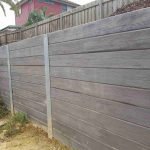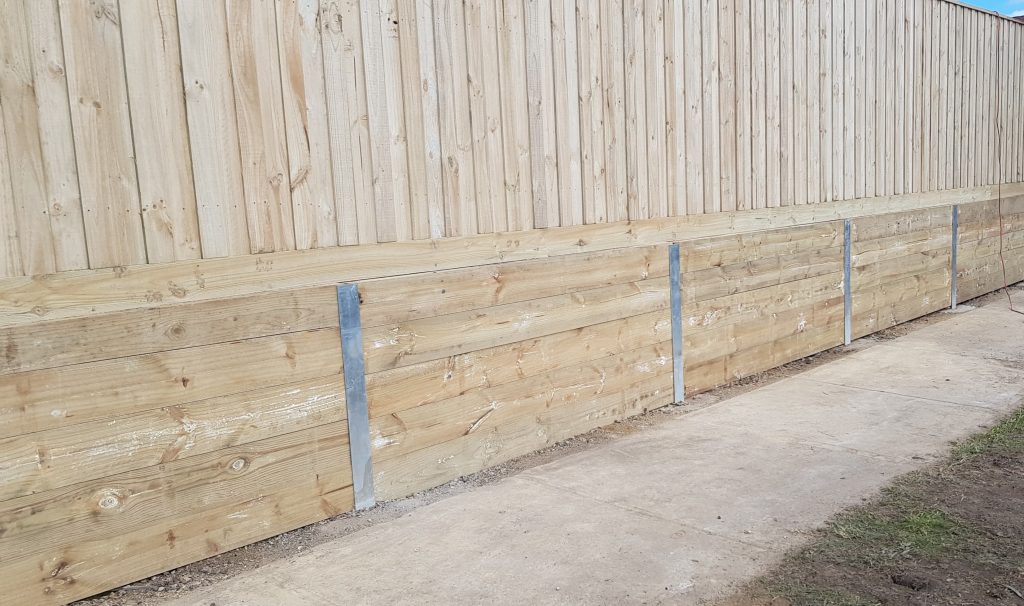Introduction
When it pertains to landscape style and structural stability, maintaining walls play a crucial role in keeping back soil and avoiding erosion. However, lots of homeowners and home managers harbor mistaken beliefs about the professionals who build these essential structures. The term "retaining wall installer" includes various functions, consisting of maintaining wall contractors and specialists focusing on products like concrete sleeper, H beam, wood sleeper, timber sleeper, and stone. This post aims to clarify 5 Typical Misconceptions About Retaining Wall Installers to help you make notified choices when employing these experts.
1. Mistaken belief 1: All Retaining Wall Installers Are the Same
Understanding the Variety of Professionals
When you hear "retaining wall installer," what enters your mind? Many individuals assume that all installers are equally skilled and knowledgeable. However, that's far from the reality. The reality is that retaining wall professionals can specialize in different products and techniques.
The Different Types of Retaining Wall Builders
- Concrete Sleeper Installers: Specialists in utilizing precast concrete panels for stability. Wood Sleeper Specialists: Focus on lumber as a flexible material but may not be as durable. Stone Masonry Specialists: Experienced craftsmens who create aesthetically pleasing stone walls. H Beam Lovers: Experts who utilize steel beams for durable applications.
Each type of professional brings unique skills to the table. Working with an expert ensures that your job is performed with precision.
Why Expertise Matters
Specialization matters due to the fact that it causes much better project results. For example, if you're searching for a modern-day look with resilience, a concrete sleeper installer will likely serve you much better than a wood sleeper professional. Comprehending the distinctions can help set realistic expectations for your project.
2. Mistaken belief 2: Retaining Wall Installation Is Just About Aesthetics
The Structural Significance of Retaining Walls
While aesthetic appeals are unquestionably important in landscaping, thinking that maintaining wall installation is simply cosmetic is misleading. The primary function of keeping walls is to provide structural assistance versus lateral earth pressures.
Real-Life Situations Where Structure Matters
Imagine living on a slope with no support; gradually, you would face major disintegration concerns. Correctly installed maintaining walls prevent landslides and protect your residential or commercial property's structure. Overlooking this element can lead to expensive repairs down the line.
Balancing Looks with Functionality
The best maintaining wall installers understand how to balance charm with performance. They can develop visually enticing styles while likewise guaranteeing that the structure successfully serves its purpose.
3. Mistaken belief 3: DIY Projects Are Always Cheaper Than Hiring Professionals
The Hidden Expenses of DIY Installation
Many homeowners think they can conserve money by tackling their keeping wall job themselves; however, this isn't always the case. While initial expenses may seem lower when choosing a DIY technique, concealed expenditures often build up quickly.
Common Hidden Costs Include:
- Materials: Getting top quality stone or wood can be pricey. Equipment Rentals: Renting specialized tools includes overhead. Labor Time: Your time has value too; consider how long you'll invest in this project. Mistakes: Errors can cause pricey rework and even structural failures.
When Expert Help Makes Financial Sense
A professional retaining wall contractor not just brings know-how but likewise efficiency that conserves you time and eventually cash in the long run. Their experience permits them to anticipate prospective mistakes and resolve them proactively.
4. Mistaken belief 4: Any Material Will Work for Any Situation
Choosing the Right Material for Your Environment and Terrain
It's easy to think any material can be used interchangeably when developing a keeping wall; however, each product has actually specific benefits fit for specific situations.
Material Breakdown: Which One Fits You?
Concrete Sleeper: Ideal for modern looks and strong support. Wood Sleeper: Uses a rustic look however may require upkeep over time. Stone: Offers natural appeal however frequently comes at a greater cost. H Beam: Excellent for sturdy applications however less aesthetic appeal than other materials. Timber Sleeper: Affordable yet less resilient compared to concrete or stone options.Consulting Experts Helps You Choose Wisely
Consulting with experienced keeping wall installers ensures you're choosing the best material based on regional environment conditions and soil types-- both vital elements impacting durability.
5. Misconception 5: All Retaining Wall Professionals Are Overpriced
Breaking Down Prices Designs in Retaining Wall Installation
There's a dominating belief that all contractors charge expensive charges for their services; nevertheless, rates varies extensively based on several aspects such as experience level, materials used, and complexity of the job.
Factors That Influence Contractor Rates Include:
- Type of Material Utilized (e.g., wood sleeper vs stone) Project Size Labor Costs Geographic Location Accessibility Issues
Finding Worth Beyond Cost Alone
While it's tempting to opt for the lowest bidder, consider what you're getting for your investment; in some cases paying slightly more results in remarkable workmanship and durability of your structure.

FAQs
Q1: What need to I try to find when employing a keeping wall installer?
A1: Look for experience in similar projects, customer reviews, licensing credentials, and warranties on work performed.
Q2: How do I understand if my home needs a retaining wall?
A2: If you're experiencing soil erosion or have actually sloped terrain affecting your home's structure stability, it's a good idea to seek advice from an expert.

Q3: What products are best fit for residential keeping walls?
A3: Choices include concrete sleepers for modern appearances, natural stone for visual appeals, or dealt with wood sleepers if you're looking for something budget-friendly yet functional.
Q4: Can I set up a maintaining wall myself?
A4: While it's possible to do so as a DIY project, employing professionals typically causes better results due to their know-how in managing complex circumstances effectively.
Q5: How long does it require to install a retaining wall?
A5: Depending on size and complexity, setup can take anywhere from one day approximately numerous weeks when accounting for curing times or website preparation https://telegra.ph/Changing-Your-Outdoor-Space-with-an-Experienced-Retaining-Wall-Contractor-Near-Me-02-26 needs.
Q6: Exist permits needed for installing a retaining wall?
A6: Yes! Depending on your regional guidelines and zoning laws, getting licenses before starting construction may be needed-- check with local authorities first!
Conclusion
Understanding these mistaken beliefs about maintaining wall installers is vital when making choices associated with your landscape style or residential or commercial property management requirements. From acknowledging specialization among experts to comprehending pricing structures-- knowledge is power! By debunking these misconceptions surrounding retainers like those concerning concrete sleepers versus wood choices or questioning whether DIY genuinely saves money-- you'll be much better geared up! So next time you're considering including or renovating a retaining structure in your home think critically about who you work with; after all-- your financial investment is worthy of professional attention!